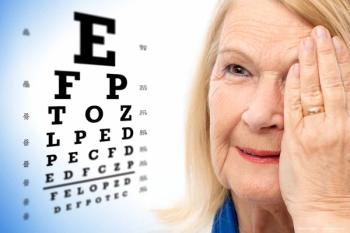
ARVO 2024: An adaptable deep learning model for geographic atrophy segmentation
Qinqin Zhang, PhD, presented on a deep learning model for GA segmentation at this year's ARVO meeting
The Eye Care Network spoke with Qinqin Zhang, PhD, at this year's ARVO meeting. At the conference in Seattle, Washington, she presented a poster titled "A unified deep learning model for geographic atrophy segmentation: Adaptable to SS-OCT and SD-OCT data with multiple scan patterns." Here, she gives an overview of her presentation and its applications in geographic atrophy (GA).
Editor's note: The below transcript has been lightly edited for clarity.
Qinqin Zhang, PhD: Hi, my name is Qinqin Zhang. I'm a senior application data scientist at Carl Zeiss Meditec. So thank you for giving me this opportunity to present our work. So at ARVO in Seattle, I'm presenting a paper titled, "A unified deep learning model for geographic atrophy segmentation: Adaptable to SS-OCT and SD-OCT data with multiple scan patterns." So, in this paper, we will describe a deep learning model combined with the OCT technique to accomplish automatic and the precise assessment or deletion.
So, the goal was to train a deep learning model that can adjust the micro scan patterns or spectral domain OCT and the swept-source OCT images to automatically and reliably segment GA. To achieve this goal, we extracted 3 features from the oct volume data. So, what is [the] retinal thickness value that can detect the changes from retinal layers and the other is the optical attenuation coefficient values that can detect the abnormality IP layers and the sub IP layers that can capture the hyper transmission defects to detect the other attendees they incur the layers. So by combining these 3 features, a color image was generated and fed into the AI model. So we tune the hyper meter audit model based on the ground truth generated by the clinical expert. So then we can get automatically segmentation on the GA and then mirror size.
The results of this research achieved a high sensitivity of 0.99, and a high specificity of 0.93 on eye level detection or the GA with a high DSC of 0.92 compared to the ground truths. That is indicating a high accuracy in segmenting GA. So this is exciting, because this model the holds promise as a valuable management tool for GA segmentation, monitoring, and also detection. So with adaptability with respect to spectral domain OCT and swept-source, OCT and other scan patterns. So, we are excited to present at ARVO and hopefully that will be beneficial to the attendance here. Thank you.
Newsletter
Get the essential updates shaping the future of pharma manufacturing and compliance—subscribe today to Pharmaceutical Technology and never miss a breakthrough.















































